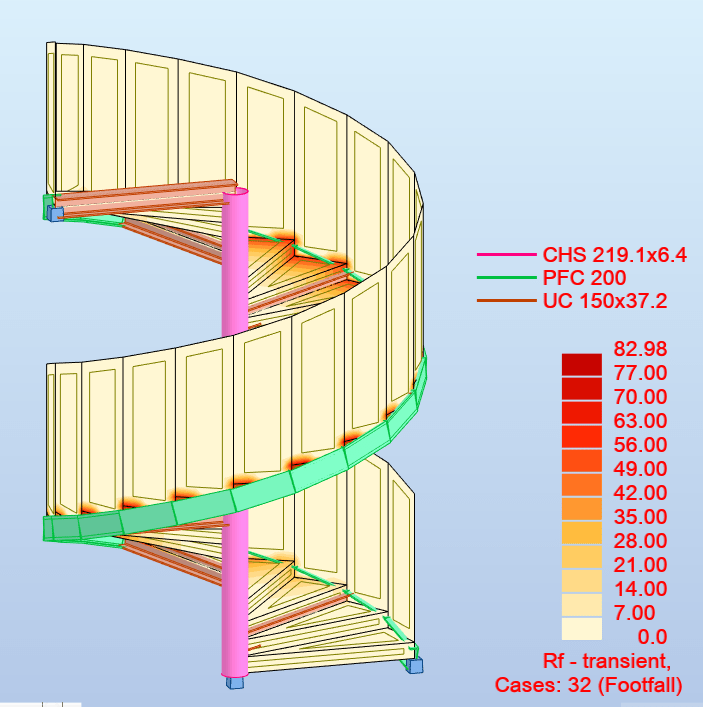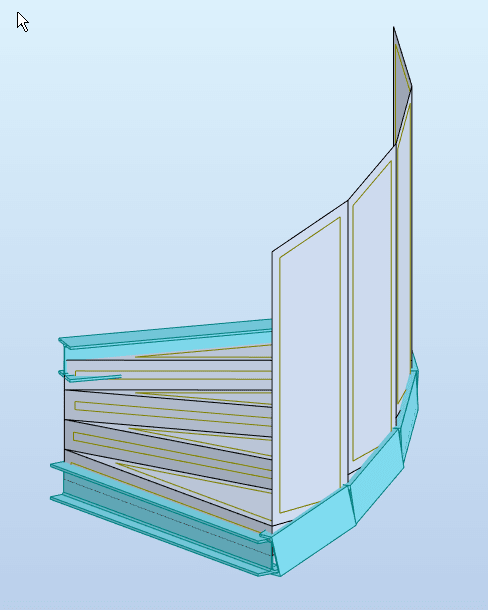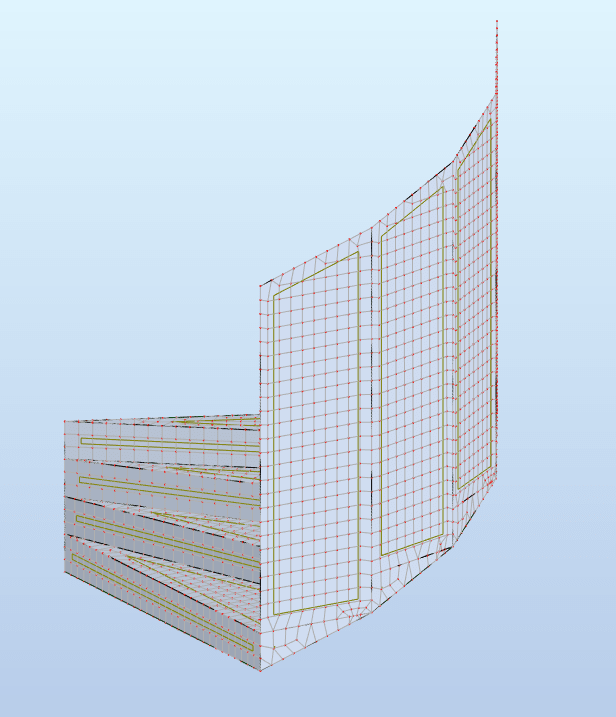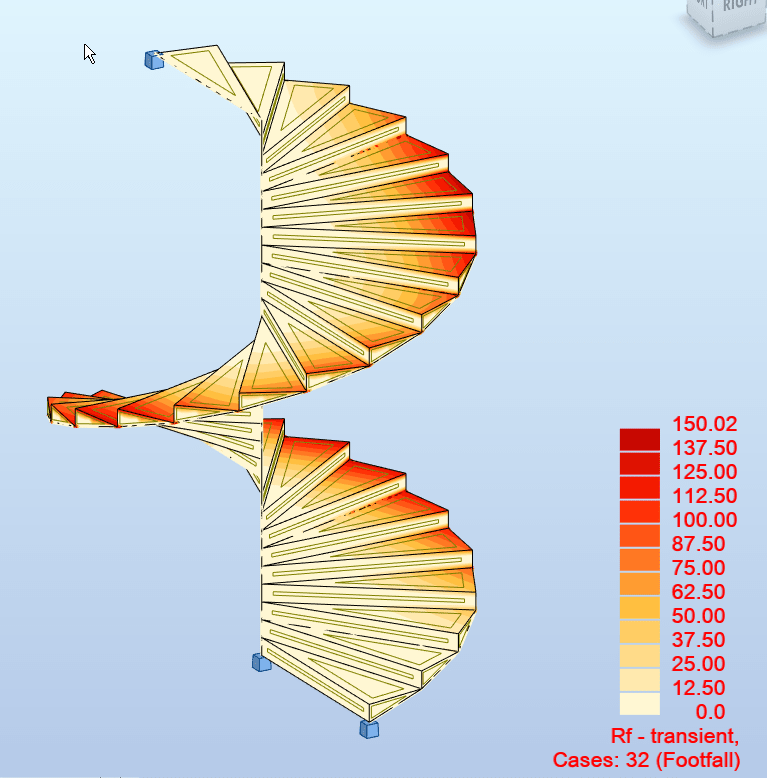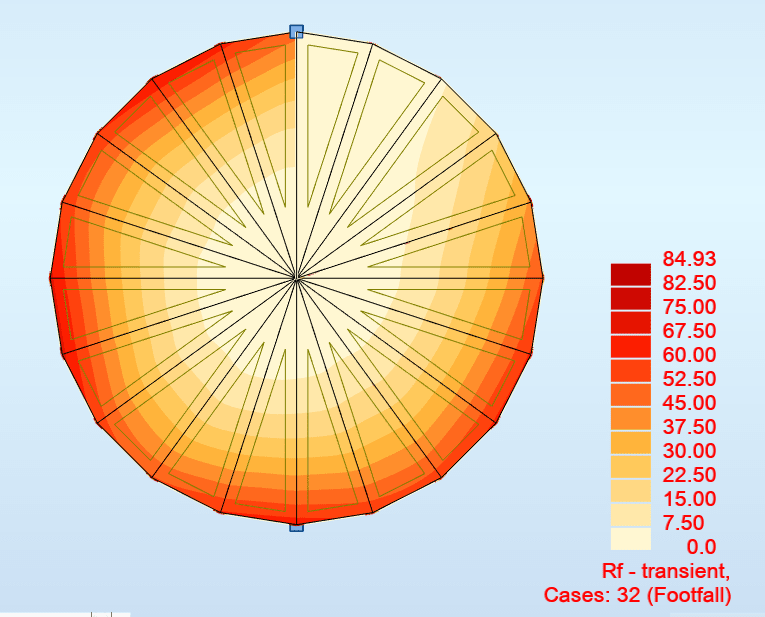l______40mm______l
Structural
- Jul 19, 2020
- 16
Hi all, I'm looking for some guidance on the difference between the resonant/steady state and transient vibration.
I'm designing a steel staircase in a public building and I'm currently checking it for footfall vibrations. I'm doing the analysis in Autodesk Robot Structural Analysis package and am using the SCI P354 guide (Design of Floors for Vibration 2009) for the design criteria. I want to limit my response factor/multiplying factor to 24 as per Table 5.3 from the SCI guide (public stairs).
At the moment I've got a very stiff staircase with a high natural frequency. I'm getting a Resonant response factor of 11 and a Transient response factor of 83.
I've heard mixed information as to whether you can simply just take Resonant response factor or whether you need to consider both.
Any advice would be appreciated.
Cheers,
40mm
I'm designing a steel staircase in a public building and I'm currently checking it for footfall vibrations. I'm doing the analysis in Autodesk Robot Structural Analysis package and am using the SCI P354 guide (Design of Floors for Vibration 2009) for the design criteria. I want to limit my response factor/multiplying factor to 24 as per Table 5.3 from the SCI guide (public stairs).
At the moment I've got a very stiff staircase with a high natural frequency. I'm getting a Resonant response factor of 11 and a Transient response factor of 83.
I've heard mixed information as to whether you can simply just take Resonant response factor or whether you need to consider both.
Any advice would be appreciated.
Cheers,
40mm

